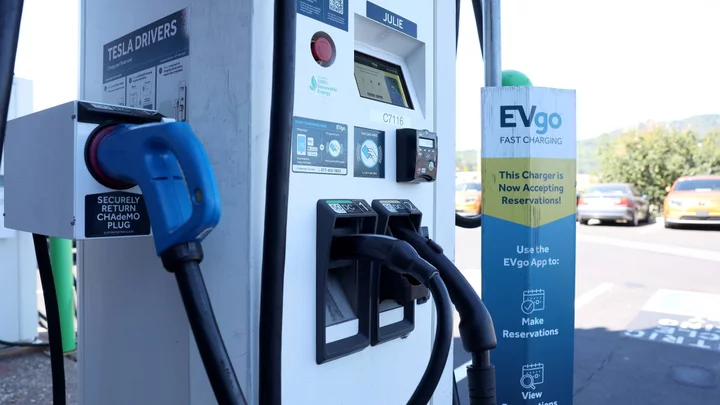The woman who until recently ran the EVgo car-charging network can now take a break, but her former employer and its competitors shouldn’t expect rest anytime soon.
Cathy Zoi, who retired in November after six years leading that Los Angeles firm, spoke Wednesday at Washington think tank Resources for the Future about the accelerating pace of automotive electrification since she took the helm at EVgo.
In 2017, when the electric options among traditional automakers stopped at the Nissan Leaf and the BMW i3, "it wasn’t clear that the whole world was going to electrify. Now there’s not a car company that’s not investing significantly in electrifying its offerings.”
But back then, she added, people also underestimated the complexity of building EV-charging systems. "Our fast chargers are highly complex pieces of equipment,” Zoi told onstage interviewer Richard Newell, CEO of RFF (a nonprofit funded by government, foundation, industry, and individual donations). “They have to talk to 50 different models of cars.”
Photo by Caroline Brehman/CQ-Roll Call, Inc via Getty Images (EVgo charging station at D.C.'s Union Station)And while charger operators don’t have to build new infrastructure between their stations, each location can need local upgrades. For example, now that EVgo’s standard design for a charging station specifies spaces for 10 vehicles, building one usually requires a new transformer there.
Zoi said it can take from six to 18 months between the first thought of building a charging station somewhere to having EVs plugged in there. Permitting eats up some time, but having the local electric utility buy a transformer, place it, and test it can take much more. “We are often in a queue for like, six, eight, 12 weeks for the utility to come and show up,” Zoi said.
EVgo’s chargers are seeing a 15% round-the-clock utilization rate overall, although Zoi mentioned one location in Brooklyn at 52%. EVgo plans to upgrade its “software backbone” to allow for dynamic pricing that, for example, could discount rates for overnight charging.
Newell and audience members did not inquire about the reliability of EVgo chargers. Non-Tesla chargers have been the subject of many complaints from drivers who find them malfunctioning or inoperative, but EVgo did launch a “ReNew” program in September to give its chargers a tune-up.
Charger-network operators will need to scale up their efforts dramatically if EV sales grow as anticipated and as pushed along by government efficiency mandates. Zoi said that while there are some 30,000 fast chargers in the US today, we’ll need 200,000 to 300,000 by 2030—something "that is absolutely possible."
The Biden administration’s two major green-economy legislative vehicles—2021’s Infrastructure Investment and Jobs Act and last year’s Inflation Reduction Act—are both helping that effort and making it more expensive in the short term, she said.
On one hand, the IRS’s transferable EV-charger tax credits let EVgo—which has yet to turn a profit and so has no tax exposure—raise money by selling those credits. On the other, buy-America provisions in the infrastructure law’s $5 billion funding for new charging stations raise the cost per charging space built with those subsidies by about 30%.
Zoi predicted that this cost gap will shrink as more factories come online in the US and economies of scale take hold.
The other big change in EV charging is the massive pivot among non-Tesla automakers to use the Tesla-developed North American Charging Standard now managed by the industry group SAE. Zoi, a Tesla owner, voiced her preference for “NACS” (which EVgo chargers began supporting in 2019) because of how much lighter its plug is than in the competing CCS standard.
With about half of the 3 million passenger EVs on US roads, CCS chargers will be around for a while, but not forever. “In 15 years or 20 years, it will likely all be NACS," she said.









